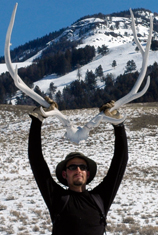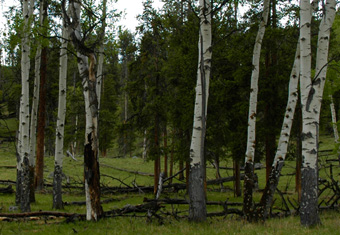

Abstract
Climate change is rapidly becoming a major threat to global biodiversity by drastically altering natural ecosystems. In order to fully comprehend, and potentially mitigate, the effects of climate change we must understand the impacts, not just on single species, but on ecological interactions. I propose that climate change has altered the interaction between elk (Cervus elaphus) and aspen (Populus tremuloides) in Yellowstone National Park (YNP), to the point where aspen populations are in widespread decline. Aspen shoots that are not physically protected suffer massive browsing by elk. Yet elk movement is largely determined by snow depth, and deep snow protects aspen shoots from herbivory. Historical snow levels in YNP were substantially higher, and have been declining since the end of the nineteenth century. Higher historical snow levels correspond with peaks in aspen regeneration, which has subsequently declined throughout the twentieth century along with winter precipitation. I seek to understand how current variation in snow depth affects the interaction between elk and aspen in YNP, and couple this with historical snow measurements to assess how declines in snow level driven by climate change have altered this important ecological interaction. I will address this issue with a combination of large-scale correlative studies, manipulative experiments, meta-analysis, and quantitative population modeling. I hope that by examining the impacts of climate on the elk-aspen interaction, we can find a way to help mitigate such impacts. While there is a huge literature on the ecological effects of climate change, the only solution that most studies recommend is merely to cut fossil fuel emissions. This is clearly an important task, yet there must also be more that we can do. I hope to provide managers with on-the-ground solutions to some of the impacts of climate change. While declines in winter precipitation are beyond our control, elk abundance is not. Humans are very good at regulating ungulate numbers, either through direct hunting or through the reintroduction of native carnivores. By providing a mechanistic understanding of how climate change affects the elk-aspen interaction, I hope to generate quantitative predictive models to determine what elk densities will, for given snow depth levels, allow aspen to recruit and persist across the landscape.
